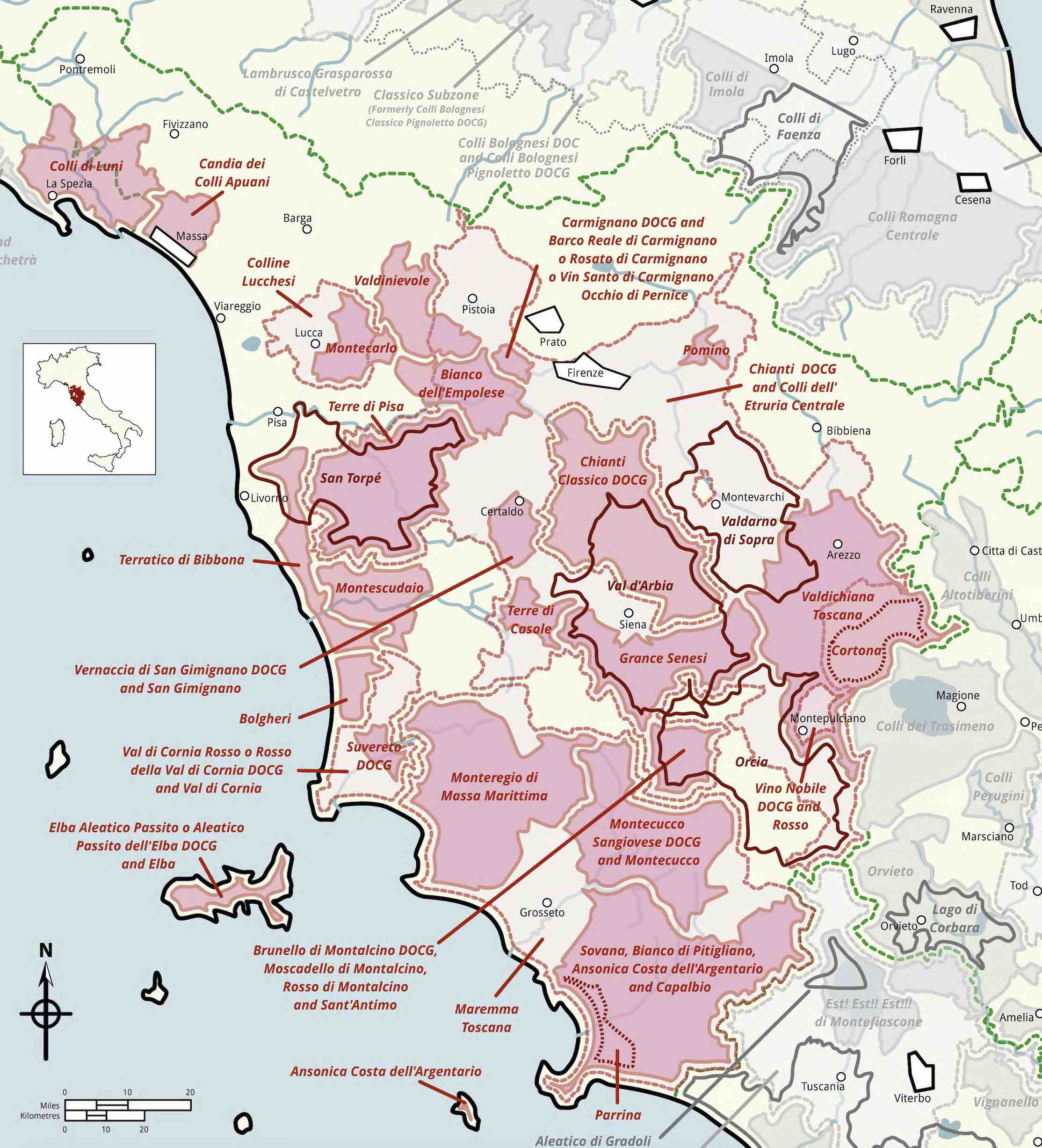Luce Brunello is the estate’s tribute to one of Italy’s crowning jewels of wine production. Of the 217 acres of vineyards at Luce, 27 are are officially listed in the Register for Brunello di Montalcino DOCG. It is an exquisitely balanced wine, gentle and yet powerful, and is produced in very small quantities to showcase the unique character of a pure Sangiovese from the estate and to pay tribute to the tradition of winemaking excellence in Montalcino.
The estate consists of 615 acres of land, 217 of which are planted to vine. Sangiovese is planted in the higher elevation parcels (up to 1500 feet), which are rich in sandstone and limestone, while the lower altitude clay plots are better suited to Merlot.
Luce Brunello is the estate’s tribute to one of Italy’s crowning jewels of wine production.
Today, Tenuta Luce goes so much further than was originally envisioned when started as a project over 20 years ago.
The estate now has some of the most exceptional vineyards in Montalcino and, as of 2018, a state of the art winery to nurture every step of the winemaking process.
The original vision, however, remains the same: to produce bold and ambitious Tuscan wines that reflect the culture of Montalcino.
Tenuta Luce’s Brunello is the winery’s tribute to Montalcino and the wine that emerged there in the second half of the 19th century to become one of Italy’s crown jewels of wine production.
It is produced in very small quantities to showcase the unique character of pure Sangiovese from the Tenuta Luce estate vineyards and pay tribute to the winemaking tradition of Montalcino.
The estate consists of 615 acres of land, 217 of which are planted to vine. Sangiovese is planted in the higher elevation parcels (up to 1500 feet), which are rich in sandstone and limestone.
The Sangiovese is harvested during the first week of October. Fermentation occurs in temperature-controlled stainless steel tanks for 12 days, followed by 4 weeks of skin maceration. Aging occurs in Slavonian oak barrels for a minimum of 24 months.
The 2016 growing season started off mild with average rainfall. In the spring, rains were abundant and well distributed, which supported an earlier budding phase that began at the beginning of April.
A hot summer followed, which was, however, free of excessive daytime temperatures and was characterised by beneficial rain showers throughout the month of August, helping the plants to avoid water-related stress.
September was very sunny with a noteworthy range in temperature variation that facilitated a rich concentration of aromas and polyphenols within the grapes.
Ruby red in colour, on the nose the wine soon reveals its elegance and complexity with aromas of cherry liqueur, violet and tertiary notes of tobacco, black olives and undergrowth.
On the palate, the wine is compact and creamy, supported by bright acidity with well-defined and rounded tannins that give the wine a persistent finish.
Awards
17.5/20 Jancis Robinson
95/100 Decanter
97/100 Falstaff
92/100 Wine Enthusiast
96/100 Wine Spectator
18/20 Vinum Wine Magazine



